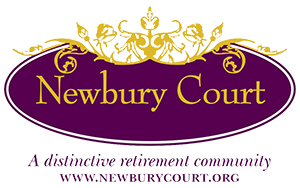Search
Saturday, December 10, 2022, Emmanuel Church, Boston
Sunday, December 11, 2022, Trinity Lutheran Church, Worcester and Online
In Praise
Sinfonia in F Major, HW I/1: Allegro assai Johann Christoph Friedrich Bach (1732–1795)
Lobe den Herrn, meine Seele Johann Christian Geisler (1729–1815)
Mein Herz dichtet ein feines Lied Christian Gregor (1723–1801)
Mache dich auf werde Licht Jeremias Dencke (1725–1795)
A Child is Born
Praelud Christian Gregor
Seht wie freundlich Christian Gregor
Lobt unsern Gott Johann Christian Geisler
Der ist von Gott geboren Johann Daniel Grimm (1719–1760)
Reflection
Pastorale Johann Joachim Quantz (1697–1773)
Hier schläft es Johannes Herbst (1735–1812)
O du zu meinem Trost geborner Johannes Herbst
Loveliest Immanuel, most worthy Friend John Antes (1740–1811)
Trio Sonata in A Major for flute, violin, and continuo Johann Gottlieb Graun (c.1702–1771)
Poco Allegro • Adagio • Allegro
Tidings of Joy
Ach dass doch die Hülfe Johann Christian Geisler
Hosianna! gelobet sei Dir Johann Christian Geisler
Siehe, ich verkündige euch grosse Freude Christian Gregor
Ehre sey Gott in der Höhe Christian Gregor
Jessica Petrus, soprano; Hilary Anne Walker, mezzo soprano
Suzanne Stumpf and Wendy Rolfe, traversi
Sarah Darling and Jesse Irons, violins
Marcia Cassidy, viola; Sarah Freiberg, cello Michael Beattie, organ
Program Notes
The Moravian church was founded by the followers of Jan Hus, a priest who was executed as a heretic in 1415. In 1457, Hus’s followers organized a society called the Unity of the Brethren (Unitas Fratrem). This nascent church led a precarious existence and was nearly wiped out by the ravages of the Counter Reformation, the Thirty Years’ War, and other religious persecution. In 1722 the Unitas Fratrem found support and protection at the residence of Count Nikolaus von Zinzendorf in Saxony and began to grow and flourish. A highly evangelical denomination, the Moravians sent missionaries to far-flung places such as Greenland, the West Indies, Africa, and the British colonies. They established their first community in North America in Bethlehem, Pennsylvania in 1741. This was soon followed by two others in Pennsylvania and three in North Carolina.
Since its reestablishment in 1722, music held a central role in the life of the Moravian church and was considered not an ornament but a necessity of life. In this communal society, opportunities were given for all to learn music and to contribute to the music of the worship services according to ability. In addition to its important role in worship, music was a frequent component of daily life. The nearly universal level of musical literacy of its members is an extraordinary aspect of this society, and their level of musical participation, both in quality and quantity in the early American Moravian communities, is astonishing. This program gives a small sampling of Christmas music that was performed in both sacred and secular contexts at American Moravian communities during the “golden age” of Moravian music (1760-1800).
While hymn singing was central to Moravian liturgies, musical works for voices and instrumental ensemble were regularly included. The musical style of Moravian vocal works of this period placed an emphasis on directness of expression meant to “edify” and awaken devotional feelings for its listeners, eschewing contrapuntal complexity and overt displays of virtuosity. Rather than employing the multi-movement cantata format of the Lutheran liturgy, these anthems were nearly always short, single movement works set to texts derived from scripture, a hymn, or a Losung or “watchword” to enhance the focus of a given service.
The majority of Moravian sacred vocal music is written for choir and small orchestra. However, works for solo and duo voices that are more intimate in character were also composed, and with this program, we revive several of these. The Moravians’ emphasis on clarity of message through musical style may be best illustrated in the vocal duets. As a typical example, in J.C. Geisler’s Lobe den Herrn, the instrumental parts include exuberant figuration, while the vocal parts use longer note values and move homophonically, allowing the text to be clearly understood.
Our chosen works for solo voice show a wide range of expression, from the tenderness of Herbst’s Hier schläft es and Antes’s Loveliest Immanuel, to the joyful outbursts in Grimm’s Der ist von Gott geboren and Gregor’s Siehe, ich verkundige euch. Particularly engaging instrumental writing includes the lively flute obbligati in Gregor’s Mein Herz dichtet ein feines Lied and Geisler’s Lobt unsern Gott.
Performance of instrumental music was always an important component of the Moravian’s music-making activities, both for improving skill in the execution of instrumental parts in the sacred vocal works and as an end in itself. Since in Moravian theology there is no distinction between the sacred and the secular, the performance of instrumental music was an activity that was strongly encouraged. The Moravian composer C.I. LaTrobe described its functions: “The practice of Instrumental Music is recommended by the Brethren, as a most useful substitute for all those idle pursuits, in which young people too often consume their leisure hours; and since its application as an accompaniment and support to the voice is calculated to produce the most pleasing effect, its use in the Church has been retained.”
Soon after their founding, all Moravian communities established collegia musica, weekly gatherings dedicated to the informal performance of instrumental music. Within the Moravian archives, Enlightenment-era aesthetics of the galant style and emfpindsamer stil are represented in works by pre-classical composers such as Graun, Hasse, and C.P.E. Bach. An example of a Moravian manuscript that was copied for these collegia musica gatherings is Johann Gottlieb Graun’s Trio Sonata in A Major. This work, originally composed for two violins and continuo, was adapted by a Moravian copyist to use flute in place of the first violin. The different colors of the flute and violin work especially well to convey the contrasting characters of the two treble lines that Graun composed for the unusual opening movement of the work.
Two of the other instrumental works on this program are excerpts from larger vocal works. The Praelud by Gregor functioned as an introduction to a multi-movement vocal work composed for a service in 1761. The Pastorale by Quantz served as a prelude to J.F. Agricola’s oratorio Die Hirten bei der Krippe zu Bethlehem.
The remarkable state of preservation of Moravian archives has been a boon to modern researchers, and it is astonishing that tens of thousands of handwritten musical manuscripts have survived intact. In fact, there are works by European composers that only survive in Moravian manuscript copies, including Johann Christoph Friedrich Bach’s Sinfonia in F Major that opens our program. The ninth son of J.S. Bach, J.C.F. Bach was prolific composer who served at the court in Bückeburg, Germany for most of his career, but many of his compositions were destroyed during World War II.
In closing, it is important to recognize that the unique culture that held music as such a vital part of daily life in the Moravian communities supported an atmosphere for intense creativity, but all this invention came about for the benefit of the community and not for the ego of the individual. Although the imressive talent of the Moravian composers included on this program, including John Antes who was one of the first American-born composers, could have brought them wide acclaim, the humility of their society kept their focus on the role of music for strengthening worship and community.
—Suzanne Stumpf and Daniel Ryan











Daniel Ryan and Suzanne Stumpf, Artistic Directors
349 Boston Post Road, Weston, MA 02493
tel. (781) 466-6694
All content © Musicians of the Old Post Road
Privacy Policy
Terms & Conditions
